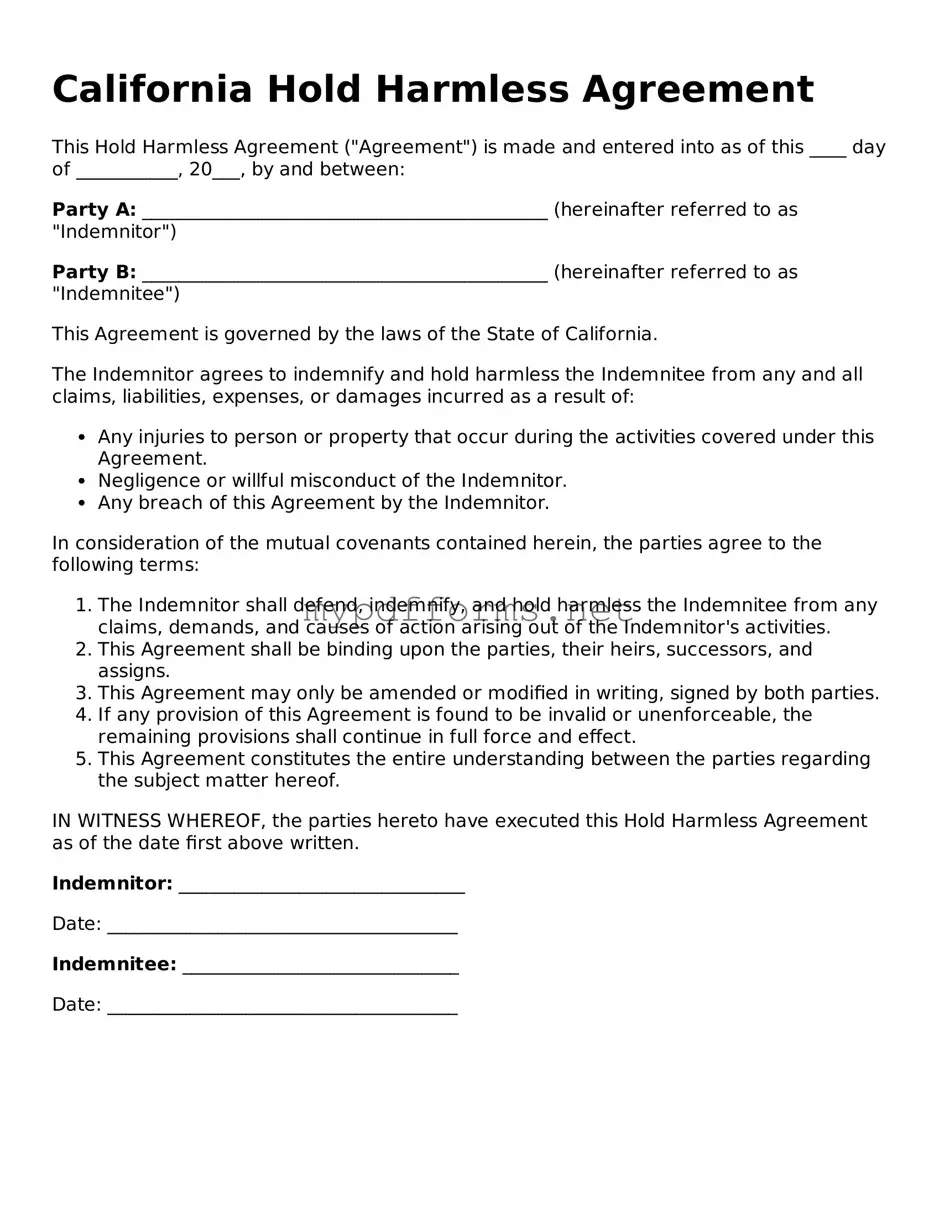The Indemnity Agreement is a document that shares similarities with the Hold Harmless Agreement. Both agreements aim to protect one party from liability for damages or injuries that may occur during a specific activity or event. While the Hold Harmless Agreement focuses on preventing claims against a party, the Indemnity Agreement typically involves one party agreeing to compensate another for losses incurred due to third-party claims. The key difference lies in the scope of protection, as Indemnity Agreements often cover broader situations beyond just holding harmless.
For those needing to notarize signatures correctly, accessing a well-structured Notary Acknowledgement form guide will be essential in ensuring compliance with legal standards. You can find a reliable template at Notary Acknowledgement form requirements, which is pivotal for fulfilling documentation needs accurately.
The Waiver of Liability is another document closely related to the Hold Harmless Agreement. This waiver allows individuals to relinquish their right to pursue legal action for injuries or damages that may arise from participating in an activity. Like the Hold Harmless Agreement, it seeks to limit the liability of one party. However, a Waiver of Liability often requires the participant's signature to acknowledge their understanding of the risks involved, whereas a Hold Harmless Agreement may not always necessitate individual consent.
The Release of Liability is similar in nature to both the Hold Harmless Agreement and the Waiver of Liability. This document releases one party from any legal claims that may arise from their actions or negligence. While the Hold Harmless Agreement primarily protects one party from claims made by another, the Release of Liability can be seen as a more comprehensive approach, as it explicitly states that the signer cannot hold the other party accountable for any damages or injuries sustained.
The Liability Insurance Policy can also be compared to the Hold Harmless Agreement. While the latter is a contractual agreement between parties, a Liability Insurance Policy provides financial protection against claims for damages or injuries. Both documents serve to mitigate risk, but a Hold Harmless Agreement is a proactive measure taken between parties, while liability insurance serves as a safety net in case of unforeseen incidents.
The Service Agreement often includes a Hold Harmless clause, making it another relevant document. This type of agreement outlines the terms of service between two parties and may incorporate a Hold Harmless provision to clarify liability responsibilities. The inclusion of such a clause reinforces the intent to protect one party from claims arising during the execution of the service, similar to the standalone Hold Harmless Agreement.
The Partnership Agreement can also contain a Hold Harmless provision. In business partnerships, parties may agree to indemnify each other against certain liabilities that may arise during the course of their partnership. This provision ensures that one partner is not held responsible for the other partner's actions, mirroring the protective intent of a Hold Harmless Agreement.
The Construction Contract is another document that frequently includes Hold Harmless clauses. In construction projects, contractors and subcontractors may agree to hold each other harmless for claims related to work performed. This is essential in an industry where accidents can occur, and it helps to delineate responsibility among various parties involved in the project.
The Rental Agreement may also feature a Hold Harmless provision. When renting property, landlords and tenants often agree to protect each other from liability for injuries or damages that occur on the premises. This aspect of the Rental Agreement serves to clarify responsibilities and protect both parties, similar to the Hold Harmless Agreement.
The Employment Agreement can include a Hold Harmless clause as well. Employers may seek to protect themselves from claims arising from employee actions during the course of their employment. This provision helps to define the liability landscape between employer and employee, echoing the protective nature of a Hold Harmless Agreement.
Finally, the Event Participation Agreement is akin to the Hold Harmless Agreement. Participants in events often sign this document to acknowledge the risks involved and agree not to hold the event organizers liable for any injuries sustained. This agreement serves a similar purpose, ensuring that participants understand their responsibilities and the inherent risks associated with the event.
